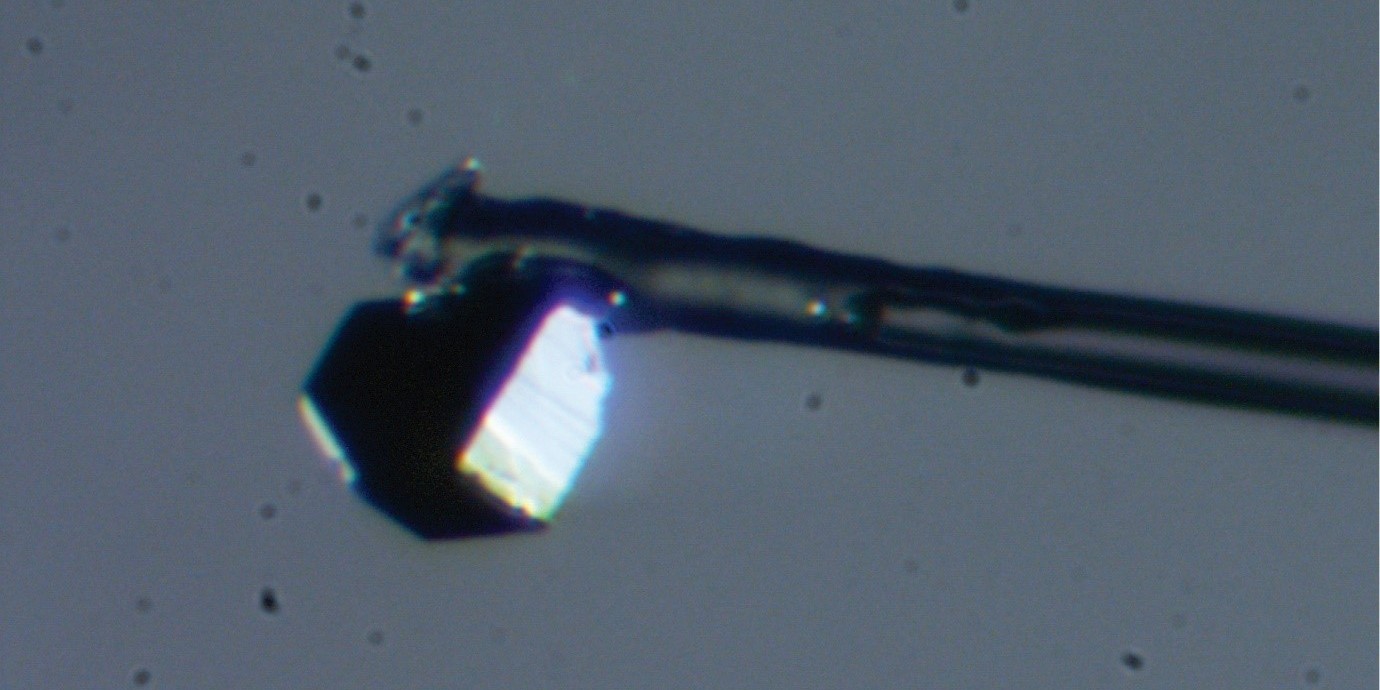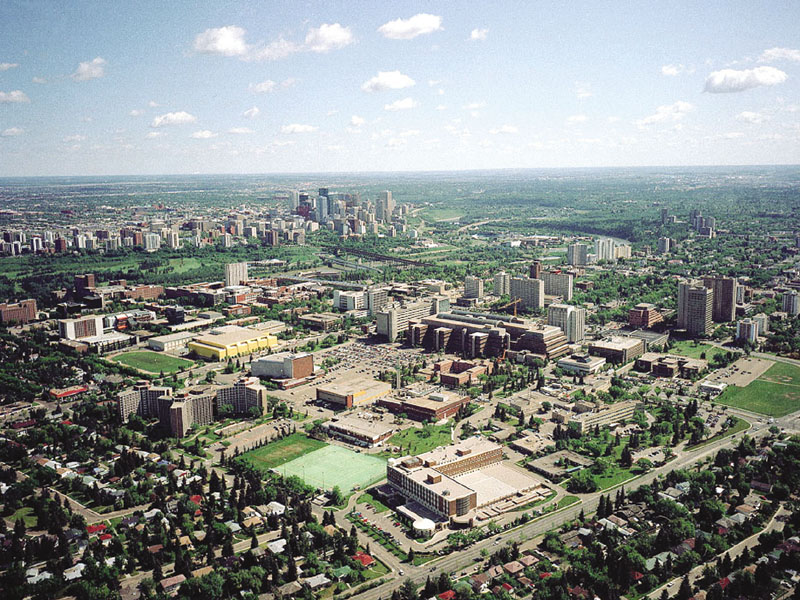A student from the University of Alberta discovers a previously unknown mineral in a diamond
The discovery of the unusual new mineral Goldschmidtit raises strange questions about the mantle.
A new and strange mineral was discovered by graduate student Nicole Meyer at the University of Alberta. The one with the mineral name Goldschmidtit in honor of the founder of modern geochemistry Victor Moritz Goldschmiddt - has an extraordinary chemical signature for a mineral from the earth's mantle.
"Goldschmidtite has high concentrations of niobium, potassium and the rare earth elements lanthanum and cerium, while the rest of the mantle is dominated by other elements such as magnesium and iron," explains Meyer, a PhD student at the Diamond Exploration Research and Training School, part of NSERC's Collaborative Research and Training Experience. "In order to form a large part of this mineral from potassium and niobium, it must have formed under extraordinary processes that concentrated these unusual elements."

A tiny sample of gold smithite found in a diamond by University of Alberta PhD student Nicole Meyer. The newly discovered mineral has high concentrations of elements that rarely occur in the mantle, suggesting that it has formed under extreme conditions. (Photo courtesy of Nicole Meyer)
Because access to the mantle is so difficult, scientists rely on tiny mineral inclusions in diamonds to learn more about Earth's chemistry deep beneath the surface.
"This discovery is the result of long and careful work by Nicole and the research team," said Graham Pearson, Meyer's co-supervisor. “Goldschmidtite is very rare for an enclosure trapped by diamonds and gives us a snapshot of fluid processes that affect the deep edges of the continents during diamond formation. There have been several attempts to name new minerals after Goldschmidt, but earlier ones have been questioned. This one is here to stay. "
Meyer studies under the direction of Thomas Stachel, Professor of Diamond Research and Canadian Diamond and Pearson, Professor at the Department of Earth and Atmospheric Sciences, Henry Marshall Tory Chair and Canada Excellence Research Chair Laureate.
“The work that goes into the search for a new mineral is not done by one person,” says Meyer. "It was an interdisciplinary collaboration with mineralogist Andrew Locock, crystallographer from Northwestern University, my advisors Thomas and Graham, and technicians."
The paper "Goldschmidtite, (K, REE, Sr) (Nb, Cr) O3: a new perovskite supergroup mineral found in diamond from Koffiefontein, South Africa" was published in American Mineralogist (doi: 10.2138 / am-2019-6937).
This is the second new mineral discovered by DERTS graduates this year. Nixonite was discovered by the master student Garrett Harris. The paper "Nixonite, Na2Ti6O13, a new mineral from a metasomatized garnet pyroxenite from the western Rae Craton, Darby kimberlite field, Canada" was published in American Mineralogist (doi: 10.2138 / am-2019-7023).
The researchers estimated the diamond with the gold smithite, about 170 kilometers deep below the earth's surface at temperatures of almost 1.200 degrees Celsius.
What is DERTS?
DERTS - The Diamond Exploration and Research Training School is a unique higher education program that brings industry, government and academia together to train students in the latest advances in geochronology, indicator mineral analysis and interpretation, volcanology, exploration geophysics and remote sensing. DERTS includes a component for an industrial internship, which gives the students on-site experience in mines and in exploration projects at the grassroots level.

View of the campus - 2006 courses were offered in 370. The current number of students enrolled is 38.311, spread across 18 faculties. Outside research funding was over $ 415 million Canadian dollars.
From its long-standing appeal as jewelry to increasing industrial applications, there is nothing more symbolic of strength and endurance than diamonds. There is also no doubt about the strength of the Canadian diamond industry, which generates around 2 billion dollars annually. With two out of three Canadian mines in the final stages of the production process, it is time to tap new exploration locations to ensure Canada continues to lead the industry.
To support the training and production of the next generation of highly skilled diamond researchers, the Natural Sciences and Engineering Research Council (NSERC) has made an investment of 1,65 million dollars over the next six years for a new Diamond Exploration Research and Training School (DERTS) University of Alberta and with partners at the University of British Columbia announced.
"There is an urgent need to learn more if Canada is to maintain its position as the world's third largest diamond producer," said Graham Pearson, DERTS senior researcher and Canada Excellence Research Chair in Arctic Resources at U of A. Diamond Mining has invested hundreds of millions of dollars in the northern economy. This economic investment and dynamic must be sustained over the long term. The discovery of new deposits will be technologically demanding, which is why we are creating the next generation of industrially qualified geoscientists. "
Funded by the NSERC Collaborative Research and Training Experience Program (CREATE), DERTS includes industrial collaborations with 10 partners - including De Beers, Diavik Mines and Dominion Diamond Ekati Corporation - all of whom are committed to working with students to find new mines . "We align our research directly with the needs of the industry," says Pearson. "It is important that new graduates are able to move seamlessly into the industry."
This transition is facilitated by annual industry internships, fieldwork and community involvement in the Canadian Arctic, soft skills training and access to some of the best research facilities in the world, with training and mentorship from world leaders in diamond research and exploration.
Located in the gateway to the north of Canada with arguably the world's largest collection of highly specialized diamond research equipment, the University of Alberta, known for its strength in diamond-related research, is the ideal guide to the new diamond exploration program. "We are uniquely positioned to offer a very broad, highly specialized education," said Pearson of the level of faculty and program staff.
“We have a large group of specialist scientists who focus on diamond exploration and they complement each other very well. We have also worked with researchers from UBC, which means that we have a team that covers all areas of diamond research. ”Eight members of the University of Alberta faculty and two members of UBC complement the research areas of kimberlite volcanology, geochronology, geophysics modeling , Remote sensing and experimental mineralogy and petrology.
DERTS, which was launched in September 2016, will host 15 fully funded students annually to do research in the field of diamonds and diamond exploration. Pearson says he and his colleagues are recruiting students from across Canada and around the world who are not only academically strong, but also naturally curious about diamonds and the world beneath our feet - a passion he shares.
“There is a special feature that is ascribed to diamonds. For me, along with the scientific interest and physical appeal, most of the appeal of diamonds is the unique time capsule they offer. Diamonds have formed throughout the history of the earth, and they give us this unique window to the deep earth that is not accessible in any other way. "
Pearson hopes that this new university education program will not only strengthen Canada's industrial longevity, but will also ensure that people everywhere continue to have access to these lasting symbols.
University of Alberta / ISE - September 2019

